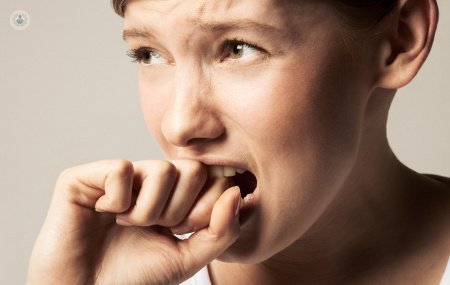Anxiety can be related to behavior "evasive"
Written by:Anxiety is an emotional state, an adaptive and universal reaction. Appears to situations that threaten, or who are perceived as such, the person who suffers.
 This reaction generates a stimulation of the nervous system resulting in an experiential, physiological, behavioral and cognitive response, characterized by a general alertness and attention. Although these reactions are normal anxiety in some people this activation state is so intense that it can be maladaptive; that is, hinders or prevents normal operation every day.
This reaction generates a stimulation of the nervous system resulting in an experiential, physiological, behavioral and cognitive response, characterized by a general alertness and attention. Although these reactions are normal anxiety in some people this activation state is so intense that it can be maladaptive; that is, hinders or prevents normal operation every day.
Experts in psychiatry claim that pathological anxiety can be classified into different clinical pictures: generalized anxiety, panic attacks, social phobia or simple phobia. This classification is based on the different ways of presenting. Each type has a certain anxiety symptoms, although almost all have an excessive fear and an irrational fear that appears disproportionately to small stimulus or even spontaneously. Anxiety can also occur in the context of other medical conditions such as Obsessive Compulsive Disorder (OCD) or psychosis.
How to treat anxiety?
To treat anxiety, you must first make a correct clinical diagnosis, because depending on the picture presented by the patient may be different. For example, some pictures as social phobia or simple phobias can be treated with psychotherapy.
Cognitive behavioral techniques are within psychotherapy, which have shown greater efficacy. In general, the goal of cognitive behavioral techniques is that, through exposure in a controlled and progressive situations that cause anxiety, it abates. Other disorders such as panic attack disorder may benefit from psychopharmacological approaches. In these cases usually it uses a combination of antidepressants and anxiolytics.
Regardless of diagnosis and treatment that the patient should receive, it is important to recognize what is happening and also be able to attribute their symptoms and problem behaviors associated with anxiety. For example, in the case of panic attacks, anxiety is so intense that manifests with multiple somatic symptoms (tachycardia, shortness of breath, chest tightness, sweating, trembling, dizziness or tightness).
Often the patient who has a problem with anxiety have a tendency to avoid certain situations linked to anxiety, such as places where many people or car etc.. It is necessary to avoid "avoidant" behaviors end up assuming a problem or limitation in the patient's life, why should be identified as a result of behavioral anxiety, cope and deal.
The severity of an anxiety disorder is, in many cases, more related to "evasive" behavior and its functional impact on the daily life with anxiety symptoms themselves.
Common sense must prevail in the management of anxiety disorders and, before considering any kind of psychological or pharmacological intervention, a number of strategies related to healthy lifestyles should be implemented. For example, a structured schedule, sleep hygiene, regular exercise, avoid stimulating drinks and alcohol, to have time for leisure, family and friends.


